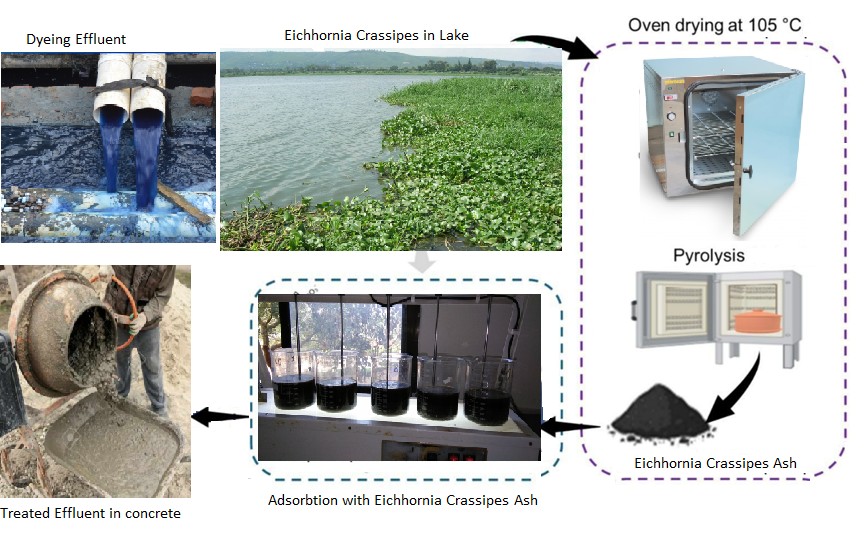
Discharge of industrial effluents in water bodies causes severe contamination in aquatic ecosystem. Eichhornia Crassipes, an economical and effective adsorbent has gained much interest in effluent treatment. This paper covers the details of Eichhornia Crassipes ash preparation, chemical properties and its adsorption mechanism on reducing the TDS, chloride, sulphate content in the textile effluent. In order to treat effluent, Eichhornia Crassipes ash was used in the dosages of 5 g/L, 10 g/L, 15 g/L, 20 g/L and 25 g/L.The treated effluent has been used with potable water to produce concrete. Treated effluent was replaced with potable water in the proportions of 20%, 40%, 60%, 80% and 100%. The strength and durability properties of treated effluent incorporated concrete have been studied. The microstructure studies such as SEM, XRD and FT-IR have been carried out for the control and treated effluent added concrete. The TDS, chloride, sulphate content present in the textile effluent has been reduced up to 75% by the adsorption process. 40% of treated effluent can be replaced with potable water in the production of concrete with an increase compressive strength of 2.43% and flexural strength of 4.83% without any reduction in quality of concrete.
Total file downloads: 11